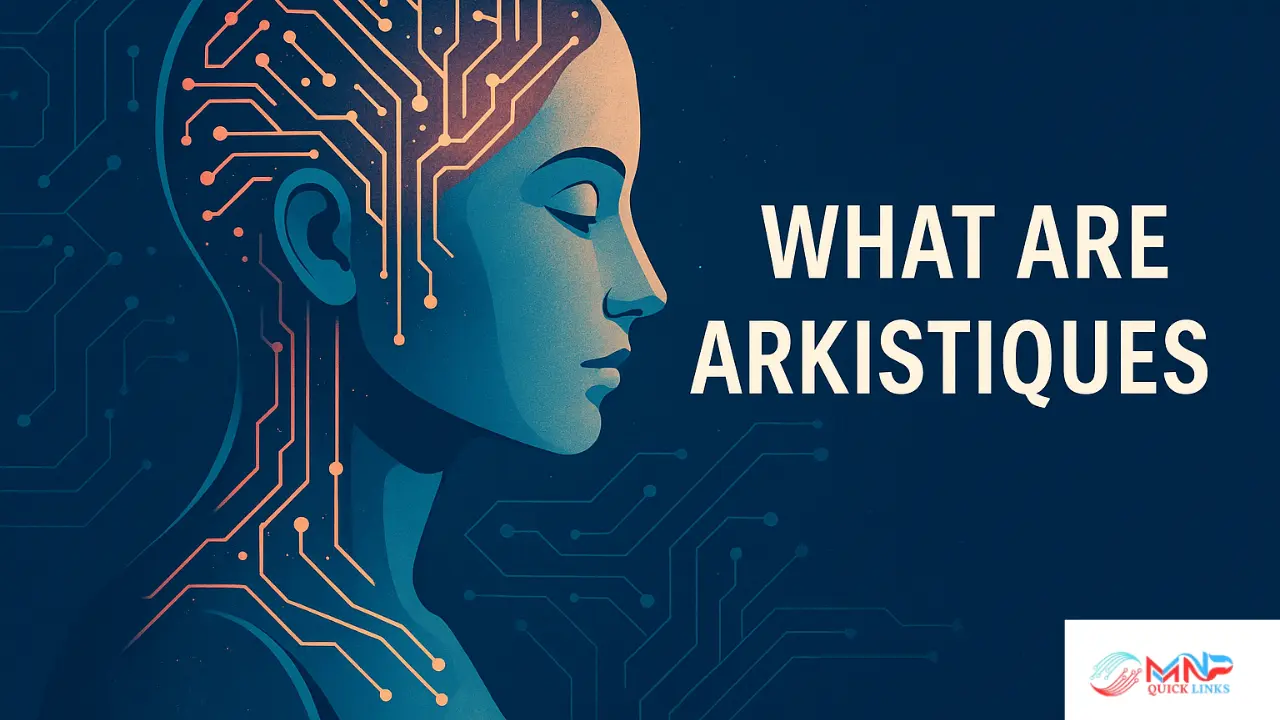In the fast-changing world of artificial intelligence, new concepts constantly emerge to reshape how we think about technology. You’ve likely heard terms like machine learning, neural networks, or generative AI. But a fresh, poetic-sounding term is quietly gaining traction: Arkistiques. What are Arkistiques, and why are creative professionals and technologists paying attention?
This article dives deep into the concept, origin, applications, and future of Arkistiques. We’ll explore how they differ from traditional AI, where they’re being used today, and how they may redefine creativity as we know it.
What Does “Arkistiques” Mean?
The term “Arkistiques” blends two powerful ideas:
- Arki: Derived from “artistic” and the Greek word “arkhe,” meaning origin.
- Stiques: Inspired by “heuristics,” or problem-solving techniques used in AI systems.
Put together, Arkistiques refers to a new class of AI systems that focus on creativity, aesthetics, and emotional resonance rather than logic alone.
Who Coined the Term?
While no single person has been officially credited with inventing the term Arkistiques, it is believed to have originated in creative tech communities and speculative design labs. These groups were looking for a term to describe emotionally intelligent AI systems that assist in or enhance artistic expression.
How Arkistiques Are Different from Traditional AI
Unlike traditional AI, which is built for efficiency, analysis, or prediction, Arkistiques are designed to explore beauty, surprise, and emotional meaning. Here’s a quick comparison:
Arkistiques vs Traditional AI
| Feature | Traditional Creative AI | Arkistiques |
|---|---|---|
| Data Source | Static datasets | Feedback + evolving tastes |
| Focus | Replication or tasks | Emotional tone + uniqueness |
| User Role | Passive user | Active co-creator |
| Output Style | Functional or expected | Expressive and varied |
| Goal | Solve a problem | Explore creativity |
Arkistiques are not just here to complete a creative task — they’re here to co-create with you.
Also read : How to Reach Durostech: Your Guide to the Official Contact Number Durostech
Core Features of Arkistique AI Systems
To understand what makes a system Arkistique, consider these building blocks:
Creative Bias Engines
These are trained not only on art or music datasets but also on emotional feedback such as audience reactions, ratings, and even facial expressions.
Style Morphing Tools
These allow the AI to remix or blend styles from different cultures, periods, or individual creators. This makes the output feel new, yet familiar.
Aesthetic Feedback Loops
Arkistiques often “evaluate” their own work based on user engagement or aesthetic metrics, then improve with each iteration.
Real-Time Collaboration
Many Arkistique tools are designed for live interaction — whether you’re a writer, musician, or designer.
How to Work with an Arkistique
Working with an Arkistique AI isn’t just about giving it prompts. Here’s a simple process:
- Choose a creative domain (music, writing, design).
- Interact with the AI live — not just through commands but through feedback.
- Iterate together, tweaking outputs based on mood, tone, or style.
- Review emotional responses — yours and the audience’s.
This loop of feedback and evolution is what makes Arkistiques stand out.
Real-World Applications
Arkistiques are already finding their way into creative industries. Here are a few areas where they’re making an impact:
1. Music Composition
Tools like AIVA and Endlesss are integrating Arkistique principles. Instead of generating random loops, they analyze your emotional state and suggest melodies that resonate.
2. Storytelling and Writing
Platforms like ChatGPT and Sudowrite can be Arkistique when tuned to an author’s voice, pacing, and mood. They become co-authors rather than tools.
3. Visual Arts and Design
Some systems are now responsive to EEG data — changing colors, shapes, or styles based on how your brain reacts. This is next-level personalization.
4. Architecture
Creative AI tools are helping architects design spaces that are not just efficient but also emotionally soothing, inspired by data from human-environment studies.
Arkistiques in Education and Therapy
In classrooms, Arkistiques can help students express themselves through art even if they lack technical skills. In therapy, these systems can create environments or music that support mental wellness.
Future Trends to Watch
Here’s what the next decade might hold for Arkistiques:
- Personalized AI Artists that learn your creative DNA
- Community Libraries for sharing and remixing styles
- Integration into Fashion and Gaming to design immersive experiences
- Therapeutic Uses in mental health and rehabilitation
Challenges in Training Arkistiques
Building an Arkistique AI is not easy. Here are some of the hurdles:
- Bias in Training Data: Emotional responses are subjective.
- Cultural Overlap: What’s beautiful in one culture may be confusing in another.
- Computational Intensity: These models require real-time feedback and adjustment.
Expert Opinions on Arkistiques
Experts see Arkistiques as part of a shift from “tool AI” to “partner AI.”
“We’re entering an era where AI doesn’t just help us create — it inspires us,” says digital artist Nola Kim.
Ethical Questions Around Arkistiques
Every new technology has its dark side. With Arkistiques, some concerns include:
- Homogenization of Taste: If everyone uses the same feedback loop, will everything start to look or sound the same?
- Loss of Human Jobs: Will companies use Arkistiques to replace human creators?
- Authenticity: If something moves you emotionally, does it matter if a machine made it?
Arkistiques vs Generative AI
While both create content, generative AI tends to focus on volume and variation. Arkistiques are more about connection, mood, and surprise.
A More Inclusive Creative World
One of the most beautiful things about Arkistiques is accessibility. They allow people who can’t draw, compose, or write fluently to express themselves. They remove technical barriers and focus on emotional intent.
Conclusion: Creativity with a Digital Soul
Arkistiques may not feel emotions like humans do, but they help us express ours better. They are not a replacement for artists — they are new instruments for creative exploration.
In the end, creativity has always been about connection. Arkistiques might just be the newest bridge between imagination and expression.
Frequently Asked Questions (FAQs)
What are Arkistiques?
Arkistiques are emotionally-aware AI systems designed to co-create art, music, design, and storytelling.
Are Arkistiques the same as generative AI?
No. While generative AI focuses on pattern replication, Arkistiques emphasize emotional depth, aesthetics, and co-creation.
Can anyone use Arkistiques?
Yes! These systems are being built to help people of all skill levels express themselves creatively.
Are there risks with Arkistiques?
Potentially — including loss of human jobs, bias in taste, and authenticity concerns. Ethical guidelines are still evolving.
Where can I try Arkistique tools?
You can explore platforms like AIVA for music, Sudowrite for storytelling, or visual AI systems with biofeedback integrations.
Also read : 418dsg7 Python: Advanced Graph Processing & Real-Time Data Management Framework






